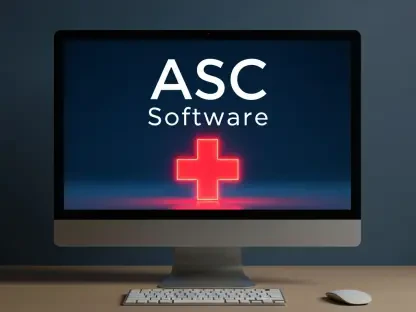Imagine a company finalizing a major acquisition, only to discover that their newly merged entity is drowning in a sea of redundant SaaS applications, hidden subscriptions, and fragmented systems. Finance struggles with unexplained costs, IT grapples with security blind spots, and leadership remains unaware of the mounting chaos beneath the surface. This scenario is all too common in the wake of mergers and acquisitions, where SaaS sprawl can silently undermine integration goals. The urgency to unify these ecosystems cannot be overstated, as unchecked duplication and disarray threaten compliance, inflate budgets, and expose vulnerabilities.
This guide aims to help organizations transform their post-acquisition SaaS landscape into a streamlined, governed single source of truth. By following a structured approach, CIOs, IT leaders, and finance teams can mitigate risks, slash unnecessary expenses, and establish operational clarity. The process addresses the immediate chaos of duplicate tools and disconnected data while laying the foundation for long-term control. Readers will gain a clear, actionable framework to navigate the complexities of SaaS unification, ensuring that every app, contract, and access point is accounted for and optimized.
The importance of this guide lies in its ability to transform a sprawling, post-deal mess into a strategic asset, ensuring that organizations can manage their resources effectively. Without a unified inventory, organizations risk missing critical renewal deadlines, overlooking security gaps, and wasting resources on redundant software. The following seven-step playbook offers a practical path to overcome these challenges, providing detailed instructions to build a centralized system that aligns finance, security, and IT under one cohesive view. This is not just about cleanup; it’s about creating a sustainable model for future growth and acquisitions.
The Urgency of Unifying SaaS Ecosystems After Mergers
Post-acquisition, the sudden collision of two distinct SaaS environments often results in a tangled web of overlapping tools, rogue subscriptions, and siloed data, creating immediate challenges for the organization. Finance teams face unexpected invoices for apps they didn’t know existed, while IT struggles to secure systems with scattered admin accounts. Security risks escalate as unmonitored access points linger, and compliance becomes a nightmare without a clear picture of data residency or vendor obligations. This chaos, often invisible to executive leadership, can derail integration timelines and inflate costs significantly.
The need for a unified SaaS inventory becomes paramount in this context, as without a single source of truth, organizations cannot accurately assess their software spending, identify redundant licenses, or enforce consistent security policies. A centralized view eliminates guesswork, enabling teams to pinpoint inefficiencies, close vulnerabilities, and ensure adherence to regulatory standards. The stakes are high, as delays in unification can lead to missed savings opportunities and heightened exposure to audits or breaches.
This guide introduces a seven-step playbook designed to transform scattered SaaS data into a governed, actionable system. From rapid discovery to continuous monitoring, each phase tackles specific pain points, ensuring that no app or subscription slips through the cracks. By following this structured approach, organizations can move beyond reactive firefighting to proactive management, setting the stage for cost control, risk mitigation, and seamless scalability in future deals.
Why SaaS Sprawl Becomes a Post-Acquisition Nightmare
Mergers and acquisitions often create an overnight explosion of SaaS sprawl, as two separate technology estates collide without immediate integration, leading to significant challenges. Duplicate tools emerge across departments, with one company using Slack and another relying on Microsoft Teams for identical purposes. Hidden subscriptions, often buried in personal expense reports or legacy contracts, compound the issue, while disconnected identity systems leave security gaps wide open. These inefficiencies drain budgets and create blind spots that leadership rarely sees until a crisis hits.
The scale of this problem is staggering, with industry research highlighting the depth of undetected SaaS usage. Gartner reports that the average enterprise operates over 125 SaaS applications, yet only a fraction are visible in traditional asset management systems. Post-acquisition, this gap widens as shadow IT from acquired entities introduces freemium tools and unmanaged accounts. Such invisibility leads to budget overruns, as renewals for unused seats pile up, and poses severe risks to compliance with regulations like GDPR or HIPAA.
Immediate action is critical to address these challenges before they spiral out of control, and without a unified approach, organizations face prolonged inefficiencies, heightened security threats, and missed opportunities for cost optimization. A delayed response can embed bad practices into the merged entity, making future cleanup efforts exponentially harder. Establishing a single source of truth early in the integration process ensures operational clarity, aligns cross-functional teams, and prevents SaaS sprawl from becoming a permanent liability.
A Seven-Step Playbook to Build Your SaaS Single Source of Truth
Navigating the complexities of SaaS unification after an acquisition requires a clear, methodical approach. The following seven-step playbook provides CIOs and IT leaders with a comprehensive roadmap to build a centralized, governed inventory. Each step addresses distinct challenges, from uncovering hidden apps to automating long-term control, ensuring a logical progression toward a unified system that supports finance, security, and operational goals.
This structured framework is designed to deliver results quickly while establishing sustainable practices. By following these steps, organizations can eliminate redundancies, strengthen security, and gain actionable insights into their SaaS ecosystem. The process not only resolves immediate post-deal chaos but also prepares teams for future acquisitions with a scalable model of governance and oversight.
Step 1: Launch a 30-Day Discovery Sprint
The first step in building a unified SaaS inventory is to conduct a rapid discovery sprint within a tight 30-day window, ensuring that the process starts immediately after the deal closes. Acting promptly helps keep data fresh, ownership clear, and critical deadlines like renewals or audits on track. This initial sweep aims to surface every app, subscription, and account across the merged entity, creating a baseline inventory to inform all subsequent actions.
Speed is essential during this phase, as delays can lead to lost negotiation leverage with vendors or undetected security risks that might compromise the system. A focused sprint captures a snapshot of the SaaS landscape before integration reshuffles responsibilities or obscures data trails. Tools and human input must work in tandem to uncover hidden subscriptions, rogue logins, and trial accounts that could otherwise remain invisible for months.
The discovery process should prioritize comprehensive coverage over perfection. By combining automated scans with manual validation, teams can build a reliable list of assets in record time. This foundational step sets the stage for normalization and rationalization, ensuring that no critical detail is overlooked as the unification effort progresses.
Combining Machine Scans with Human Insight
To achieve a complete inventory, automated tools must be paired with human context to ensure accuracy and thoroughness in identifying all resources. Machine scans can pull data from corporate card exports, identity provider logs, and browser agents to identify apps hidden in expense reports or used by niche teams. Cloud Access Security Broker (CASB) platforms can detect traffic to unmanaged tenants, while SSO reports reveal domains lacking proper security controls.
Human insight complements these scans by filling in gaps that technology might miss, ensuring a more comprehensive understanding of the systems involved. Engaging IT leads from both the acquiring and acquired entities ensures that tribal knowledge about lesser-known tools or legacy systems is captured. This dual approach creates a robust dataset, combining raw signals from systems with the nuanced understanding of team workflows.
The result is a detailed inventory that lists every domain, subscription tier, and owner, ensuring a comprehensive overview of the organization’s assets. Platforms like BetterCloud can accelerate this process by integrating data from multiple sources and enriching it with vendor databases. By the end of the 30-day sprint, a shared report should be ready, providing a clear starting point for further cleanup and optimization.
Avoiding Costly Delays in Data Collection
Postponing discovery carries significant risks that can undermine integration goals, especially since missed renewal deadlines reduce leverage in vendor negotiations, while untracked admin accounts remain exposed to potential breaches. Finance teams may end up chasing unexpected invoices, and security could struggle to identify critical vulnerabilities without a full picture of the SaaS estate.
Acting within the 30-day window prevents these issues from snowballing into larger problems that could harm your business operations. A SaaS management platform can streamline data collection, significantly cutting down the time spent on manual spreadsheet work. Automated connectors to finance systems, SSO logs, and expense reports ensure that no subscription slips through the cracks, preserving both cost control and risk mitigation.
This urgency also aligns teams around a common goal early in the integration process, ensuring that everyone is on the same page from the start. A verified inventory by day 30 allows finance to prepare for upcoming renewals, security to prioritize high-risk apps, and IT to map ownership accurately. Delaying this step only prolongs uncertainty, making subsequent unification efforts far more challenging.
Step 2: Standardize Vendor and Contract Data
After discovery, the next step is to tackle the inconsistency of vendor and contract data across business units. Post-acquisition, spreadsheets often reveal mismatched vendor names, outdated legal entities, and unclear subscription tiers, creating confusion for finance and security teams. Standardizing this information into a uniform taxonomy ensures that all systems can communicate seamlessly, eliminating the need for manual reconciliation.
A consistent dataset is vital for accurate reporting and decision-making, and without standardized fields, tools like Tableau or NetSuite struggle to align data, leading to errors in spend analysis or compliance tracking. This step enforces a single structure for vendor records, ensuring that every team operates from the same foundation as they move toward optimization and governance.
Standardization also streamlines future processes like renewals or audits. By establishing a clear format early, organizations avoid the drift in naming conventions that plagued pre-merger systems. This disciplined approach saves time and reduces errors, paving the way for more strategic tasks in the unification journey.
Defining a Universal Column Set
Creating a universal column set is the cornerstone of data standardization, and it plays a vital role in streamlining processes across various departments. Key fields should include vendor legal name, common brand alias, product edition and tier, renewal date and notice period, business owner email, data residency region, and compliance flags such as HIPAA or GDPR. These elements ensure alignment across finance, security, and IT tools without requiring constant lookups.
This standardized library must be enforced across all records to prevent discrepancies. Teams can add fields if specific needs arise, but core columns should remain unchanged once implemented. Such consistency allows for accurate tracking of spending, risk, and regulatory obligations, regardless of the business unit or system involved.
Adopting this structure also facilitates cross-functional collaboration. When every department uses the same labels, discussions about vendor contracts or compliance status become more efficient. A unified column set transforms raw data into a reliable resource, supporting everything from budget planning to security assessments with precision.
Streamlining with SaaS Management Platforms
SaaS Management Platforms (SMPs) play a crucial role in accelerating standardization by efficiently handling complex data tasks. These tools can ingest messy data exports, deduplicate vendor records, and suggest parent legal entities with minimal effort. By leveraging machine learning and public vendor registries, an SMP can merge multiple spellings of a single vendor name in minutes, saving weeks of manual cleanup.
Beyond deduplication, SMPs sync normalized data with procurement and finance systems. This integration ensures that global volume data is readily available for renegotiations, empowering teams with accurate insights. The platform also tags applications by value—gold for revenue-driving tools, silver for essential operations, and bronze for discretionary apps—enabling prioritized decision-making.
The efficiency gained from SMPs allows focus to shift from data wrangling to strategic action, enabling organizations to prioritize critical objectives. With vendor and contract information aligned, organizations can confidently address redundancies and compliance needs. This streamlined foundation is essential for moving forward with cost-cutting and security enhancements in subsequent steps.
Step 3: Deduplicate Tools and Slash Redundant Licenses
With normalized data in place, the focus shifts to eliminating overlapping tools and unused licenses for immediate cost savings. After an acquisition, merged entities often run duplicate applications for the same purpose, such as multiple CRM or chat platforms. Identifying and consolidating these redundancies reduces spending and simplifies the SaaS landscape for better manageability.
This step is not just about cutting costs but also about enhancing operational efficiency. Redundant tools create confusion for employees, increase training needs, and complicate integrations. By rationalizing the application stack, organizations can standardize workflows, reduce support overhead, and allocate resources to strategic priorities rather than maintaining unnecessary software.
The process requires a balance of speed and precision to achieve quick wins without disrupting critical operations. Focused reviews and data-driven decisions ensure that cuts are defensible and aligned with business needs. This phase delivers tangible results, often within the same fiscal year, demonstrating the value of SaaS unification to stakeholders.
Running Weekly Category Sprints
Organizing weekly category sprints keeps the deduplication process manageable and actionable. Each sprint focuses on a specific app category, such as CRM, chat, or business intelligence, pulling together contracts, usage reports, and integration maps for review. Inviting representatives from finance, IT, and key user groups ensures diverse perspectives in decision-making.
These sessions are designed for efficiency, typically lasting no more than 45 minutes. A rolling calendar allows teams to cycle through categories systematically, maintaining momentum without overwhelming participants. By narrowing the scope to one family of tools at a time, decisions become faster and more focused, avoiding analysis paralysis.
Documenting outcomes from each sprint is critical for accountability, especially when managing a complex SaaS environment with multiple stakeholders involved. Strategic apps are tagged for retention, while those slated for elimination receive a sunset date and an assigned owner to execute the plan. This structured approach builds confidence as stakeholders see progressive simplification of the SaaS estate with each passing week.
Targeting Quick Wins for Cost Reduction
Quick wins in deduplication can yield significant savings with minimal disruption. A practical checklist includes terminating inactive free-trial workspaces, merging geo-specific licenses into global agreements, downgrading seats with low usage, switching expensive enterprise plans to per-user pricing, and retiring redundant add-ons now included in core platforms. Each action targets waste without compromising functionality.
Gartner estimates that approximately 25% of SaaS spending is wasted on unused or underutilized subscriptions, a figure that often spikes after acquisitions due to overlapping tools. Leveraging usage metrics from an SMP, such as last login dates or feature engagement, provides clear evidence for cuts. Heat maps highlighting idle seats offer finance a precise target for reductions.
These immediate savings bolster the case for SaaS unification across the organization. By integrating contract lock-in dates into the analysis, teams can time vendor conversations strategically, avoiding last-minute scrambles. The combination of data-driven insights and swift action ensures that cost reduction translates into a measurable impact on the bottom line.
Step 4: Consolidate Identity and Access Management
Fragmented identity systems pose a significant security risk post-acquisition, as merged entities often operate with disparate directories and authentication policies. Unifying identity and access management under a single provider closes these gaps, ensuring consistent security controls across the SaaS landscape. This step is critical for reducing the attack surface and simplifying compliance efforts.
Beyond security, a consolidated identity layer aligns license counts with actual headcount, preventing overpayment for unused seats. It also streamlines user onboarding and offboarding, reducing manual errors and support tickets. This unification transforms a patchwork of access policies into a cohesive framework that supports both operational efficiency and audit readiness.
The process must prioritize high-risk areas while allowing for phased implementation. By focusing on critical applications first, teams can secure sensitive data quickly without overwhelming resources. This strategic rollout builds a secure foundation that scales as more apps and users are integrated into the system.
Rolling Out SSO and MFA for High-Risk Apps
Implementing Single Sign-On (SSO) and Multi-Factor Authentication (MFA) starts with high-risk applications handling finance, source code, or customer data. Selecting a primary identity provider, such as Okta or Microsoft Entra ID, enables SCIM-based provisioning to sync directories efficiently. The rollout should target critical apps within the first two weeks to minimize exposure.
A phased approach ensures progress without perfectionist delays, allowing for steady implementation. Begin by syncing user stores from subsidiaries into the target provider, mapping temporary role groups to mirror existing entitlements. Enable Just-In-Time (JIT) provisioning to eliminate manual account creation, and set deprovisioning hooks to HR systems for instant access closure upon employee exits.
This focus on high-priority apps reduces risk where it matters most. Normalized inventory data from earlier steps helps identify domains with inactive accounts or missing SAML support, allowing security teams to act decisively. The result is a tighter perimeter around sensitive systems, achieved within a manageable timeframe.
Enhancing Audit Readiness with Unified Access
A unified identity layer significantly improves audit readiness by centralizing access data. Compliance evidence, such as SOX reports, shifts from scattered screenshots to a single, exportable CSV file, saving hours during reviews. Security teams gain tools like conditional access and device posture checks, ensuring consistent enforcement across the board.
Finance benefits as well, as license counts now reflect actual usage rather than outdated estimates, providing a more accurate and cost-effective approach to resource allocation. Unified MFA prompts reduce password fatigue for users, while help desks see fewer reset requests. This consolidation turns a fragmented access model into a streamlined system that withstands rigorous external scrutiny.
The impact extends to future integrations, as a single identity provider simplifies onboarding new acquisitions. Auditors and regulators receive clear, consolidated data, reducing the likelihood of findings or penalties. This step not only secures the current environment but also prepares the organization for sustained compliance in an evolving regulatory landscape.
Step 5: Centralize Spend and Usage Analytics
Consolidating financial and usage data into a single view empowers better decision-making across departments. By integrating normalized contract details, invoices, and seat counts into a SaaS Management Platform or a business intelligence tool like Power BI, organizations eliminate guesswork from budgeting and renewals. This centralized analytics hub ensures that finance, security, and IT operate from the same accurate dataset.
Visibility into spending and usage trends prevents overpayment for underutilized tools and highlights opportunities for optimization. A unified dashboard allows leaders to track key metrics without sifting through disconnected reports or email threads. This step transforms raw data into strategic insights, enabling proactive management of the SaaS portfolio.
Regular review of these analytics ensures that insights translate into action, helping organizations stay on top of critical data trends. Without a centralized view, they risk missing creeping costs or adoption lags, which can perpetuate inefficiencies across departments. This consolidated approach aligns cross-functional priorities, driving accountability and informed decisions at every level of the business.
Building a Renewal Heat Map
A rolling renewal heat map covering at least 180 days is essential for staying ahead of vendor deadlines. Many contracts require early notice periods, and pairing this calendar with live usage telemetry prevents renewals for tools with low engagement. This visual tool helps procurement avoid costly oversights on looming agreements.
Alerts should be configured to flag anomalies, such as a 5% quarter-over-quarter spend increase for a vendor or active user rates dropping below 60% for two consecutive months. Notifications for unapproved credit card charges or low MFA adoption on sensitive apps help keep risk in check. These triggers ensure that renewals are evaluated with full context, rather than last-minute guesses.
The heat map serves as a focal point for planning, allowing teams to prioritize negotiations based on usage and cost data. By integrating this tool into quarterly reviews, organizations maintain control over their SaaS spending cycle. This proactive stance prevents surprises and positions finance teams to secure better terms with vendors.
Enabling Cross-Functional Insights
Centralized analytics must be accessible and customizable to deliver value. Drop-down filters for region, legal entity, or cost center enable leaders to drill into specific data slices, such as comparing seat usage against business outcomes in a particular geography. This flexibility ensures that insights are relevant to diverse stakeholders without altering the underlying dataset.
When vendor names and editions are standardized, dashboards align seamlessly with financial systems like NetSuite, sparing analysts from manual data mapping. The EMEA general manager can assess tool adoption against regional goals, while the U.S. team reviews identical metrics independently. This consistency fosters trust in the data across the organization.
Gartner notes that up to 25% of SaaS spending is wasted due to unnoticed scope creep or user churn. A unified view counters this by highlighting red flags in real time, prompting earlier renegotiations or tool retirements. Incorporating these insights into regular business reviews ensures that SaaS management remains a dynamic, value-driven process.
Step 6: Codify Policy-Driven Governance
Establishing formal governance policies prevents SaaS chaos from resurfacing after the initial cleanup, ensuring long-term order in software management. Documented rules, embedded in a SaaS Management Platform, act as guardrails that every new application must pass before deployment. This structured approach shifts unification from a one-time project to a sustainable operating model that enforces consistency.
Governance is not just about restriction but about enabling scalability, and clear policies play a crucial role in this process by reducing shadow IT, ensuring compliance, and streamlining decision-making around tool adoption or retirement. Without codified rules, organizations risk reverting to ad-hoc practices.









